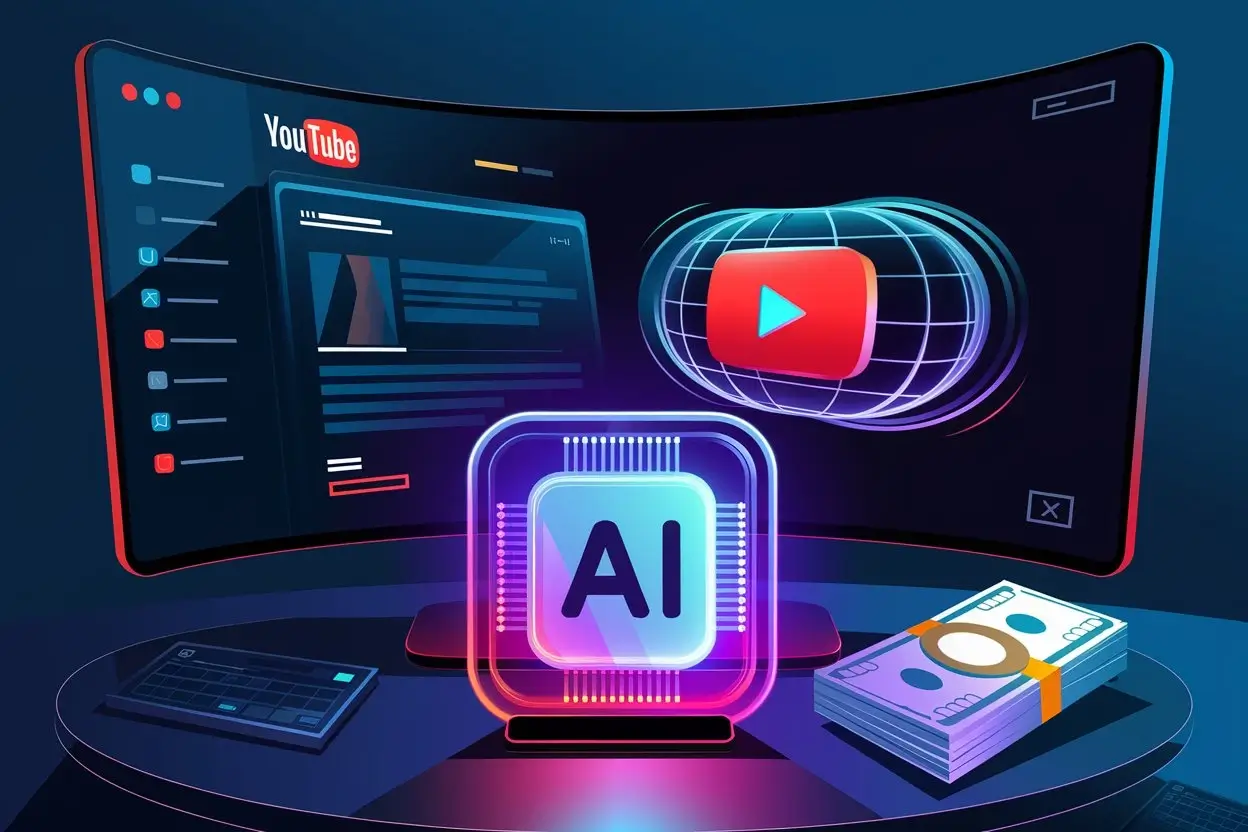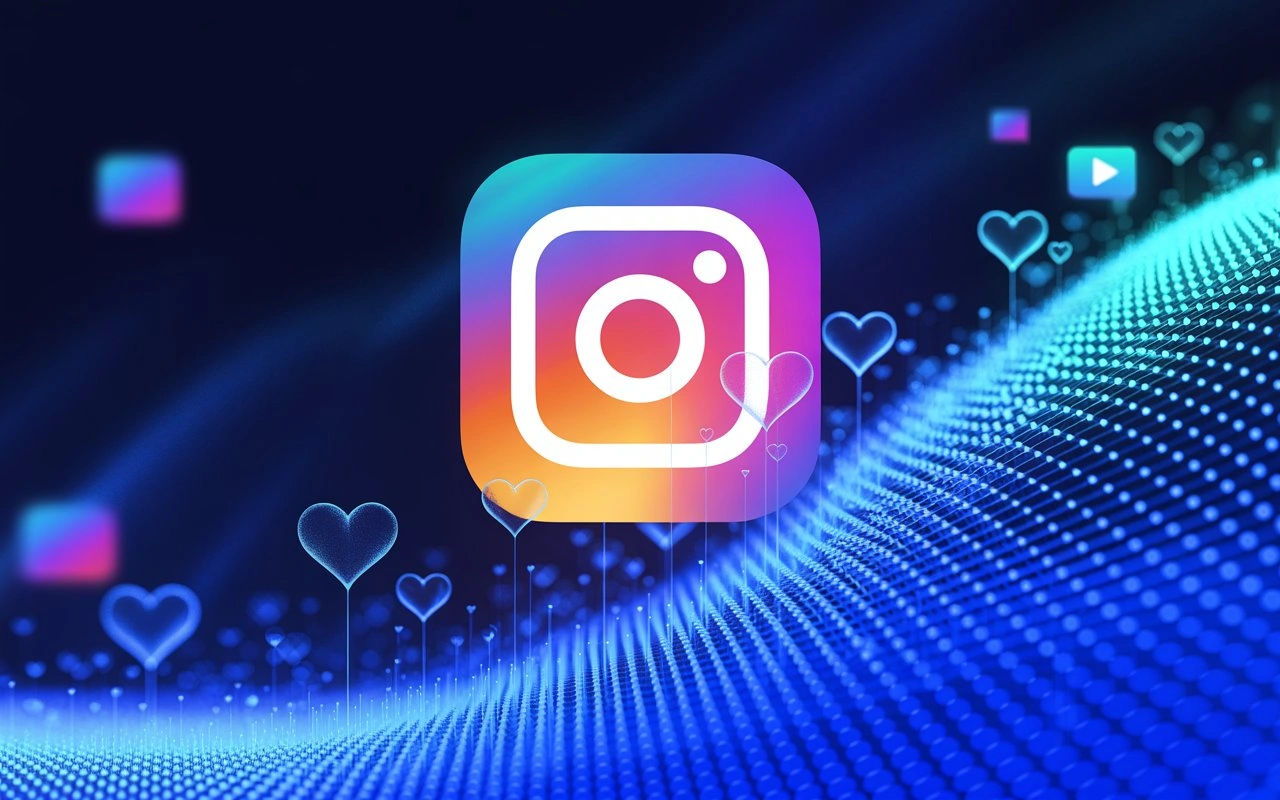Table Of Content
If you’ve ever wondered about (or even tried) making money from AI-generated videos, you’re not alone. When the AI hype hit its peak in 2022, everywhere I looked, there were bold claims like “Make $100k a Year with AI-Generated Videos” or “Become a Millionaire by 2025.” You’ve probably seen these headlines too, right? I certainly have.
As a content creator, I decided to dive headfirst into the AI video world to see if these claims held any water. At first, monetizing AI videos seemed confusing and complicated because of my mistakes (I’ll tell you those at the end). But over time, through extensive research and trial and error, I've figured out what works. Now I want to pay it forward by sharing my learnings with fellow creators like yourself. Let’s get started!
Can AI-Generated Videos Be Monetized?
Yes, you absolutely can monetize AI-generated videos on YouTube. However, there are some key factors that impact monetization eligibility and revenue potential. YouTube, like other social media platforms, earns money through advertisers. These advertisers pay big bucks to reach the people hanging out on these platforms. And how do they keep people around? By offering content that people actually want to watch. YouTube doesn’t really care how you make your content, as long as it’s valuable and original. As YouTube itself puts it,
“We’re focused on giving viewers the best experience by promoting content that is valuable and engaging.”
If your AI-generated videos hit the mark with engaging and unique content, you can definitely make money. For example, the FarFromWeek channel uses AI to create videos of a popular character “Kratos” and has built a brand with an engaging community of 1 Million+.Do you think people don’t watch faceless videos? Well, this channel (The AI Historian) has nearly 100 Million views by simply creating AI videos of historical topics and figures.

What Key Factors Impact Monetization Eligibility of AI?
Alright, so here's the thing - it's NOT IMPOSSIBLE to make money off AI-generated videos (as you've seen the examples with successful monetization). But it’s the way some people go about it that gets them into trouble.
Yes, AI saves a ton of time, but you still need to be SMART about it. There are a few things I’ve concluded that you should take care of when publishing AI videos.
#1 Content Quality
YouTube values videos that actually provide value to viewers. So AI-generated content needs to be high-quality, engaging, and informative. I made the mistake early on of prioritizing quantity over quality. I'd churn out multiple videos per day using AI tools without any refinement. The result? Low watch times, high drop-off rates, and plenty of "dislike" clicks. Not good for revenue. When you bring that creative energy, the quality of your content goes up, and guess what? People start engaging with it. Now I spend some time refining the AI scripts (by adding humor), personalizing content, and using unique AI visuals. My latest video on the 5 Best Productivity Hacks has over 50,000 views and 95% watch time. Proof that quality pays off!
You can also read more about "Faceless YouTube channel Ideas" in our blog.
#2 Adherence to Community Guidelines
People are crossing the line with AI content by violating copyright and community guidelines, especially with things like deep fakes. YouTube’s cracking down hard on this. In fact, A recent update showed that 25% of flagged AI-generated content had issues with copyright or policy violations. (source) Remember that deep fake video where Jordan Peele made it look like Obama was saying things he didn’t? (source). YouTube’s looking out for stuff like that. So how do you stay on the right side of things? Don’t push it too far. Follow the guidelines, create original content, value people's privacy, and give them respect.

#3 Originality
YouTube rewards original content that offers a fresh perspective. So creators need to customize AI outputs to ensure uniqueness. No one should use AI to pump out the same script over and over and expect success. If you’re not adding anything new or valuable, why would YouTube want to promote your content?
Research states that the channels that diversify their content have a 50% higher chance of increasing their subscriber count compared to those that stick to repetitive formats. The algorithm rewards fresh, engaging videos. To correct this, you need to use AI as an assistant, not a crutch. Bring value by mixing things up, and give YouTube a reason to rank you #1.
#4 Viewer Engagement Metrics
Raw view counts hardly matter anymore. What YouTube really cares about is whether viewers actually engage with and enjoy your content. Metrics like average view duration, likes vs dislikes, subscribers generated, comments, shares, and more now directly impact eligibility for ads and search positioning. Early on, I focused exclusively on producing a high volume of videos quickly using AI tools without considering real engagement. Despite getting decent view counts, my videos had terrible retention and almost zero likes or comments. As a result, YouTube started suppressing them in recommendations and searches. Now I carefully track engagement metrics for each video, constantly A/B testing thumbnails and video structures to figure out what resonates most with my audience. This keeps the YouTube algorithm happy and those ad dollars flowing!
Anyway, you can read more on our blog about "Top 10 AI Tools for Content Creators in 2024".
Practical Tips for Making Money with AI Videos on YouTube
If generating income from AI videos just boiled down to slapping together computer-generated content, way more creators would be rich, right? But since that's NOT the reality, let's dig into some hard-earned best practices for actually driving real monetization with AI video content. After plenty of trial and error, I've come up with five solid rules for monetizing AI-generated videos.
Rule # 1: Choose High CPM Niche
I experimented with a channel that used 100% AI-generated content, and it was successfully monetized. The key factor in its success was its niche. I started by researching what was trending using various tools (I'll share the specifics later) and compiled a list of promising niches in my notepad. I then used ChatGPT to analyze these options and recommend the best one. The recommendation was "AI News," which makes sense, right? Using AI to cover the latest developments in AI. Additionally, this niche has a high CPM…
High CPM niches attract advertisers who are willing to pay top dollar for ad placements. Here’s my step-by-step approach for finding the right niche:
- Keyword Research Tools: I’d use tools like Google Trends, Ahrefs, or SEMrush to find high search volumes and low competition keywords.
- Competitor Analysis: Analyze successful YouTube channels in potential niches to see what content and ads perform well.
- Social Media Insights: Explore Reddit, Quora, and niche forums to gauge interest and spot trending topics for content gaps.
- Affiliate Programs: Research high-paying affiliate programs to identify lucrative niches where companies are willing to pay for leads.
- Content Scalability: Choose a niche with plenty of subtopics to ensure a steady flow of engaging content.
Tip: Technology niches, like artificial intelligence, cryptocurrency, or gaming, are often great picks because they usually come with high CPMs due to their targeted audiences and the high demand for relevant content.
Rule # 2: Create High Quality Videos
What makes a video high-quality? One that keeps the viewers glued to their screens! Your Creativity + AI = High Quality Video. I’d say let AI handle 80-90% of the heavy lifting and leave room for your creative input. After all, AI might be quick, but it’s your input that will make it unique or personal.
For example, one of my top videos, which has made over $4,000, didn’t rely solely on AI. I used AI for the script and some visuals, but the human touch made it really pop. You can use Zebracat for high quality visuals like text to video converter, turn a blog post into a video, edit a video, add in subtitles, or even select from 10+ different voices to add to your video. Videos with high-quality, eye-catching visuals tend to have higher audience retention rates. (Source)
Rule # 3: Optimize for Search
62% of Google searches include video results, indicating that videos are increasingly prioritized in search queries, making keyword optimization crucial for visibility. Here’s what you can do:
- Use relevant keywords that people are actually searching for.
- Create eye-catching thumbnails that make people want to click.
- Write detailed descriptions that tell people what your video is about and why they should watch it.
- Add relevant tags so people can find your video when they're searching.
It's just as important as making great videos. Think of it like this: you have the best product in the world, but if no one knows it exists, you won't make any sales. That's where optimization comes in.
Rule # 4: Stay Compliant with YouTube Policies
YouTube doesn’t care how you make your videos, but it does care about two things:
- Are your videos cool and original? Do people like watching them?
- Are you playing by the rules? That means following YouTube's guidelines.
We’ve talked about how to bring value with a mix of creativity and AI. Now, let’s get into the standard policies you need to follow. YouTube wants its platform to be a nice place for everyone. That means no spam, no tricking people, and no bad stuff. Even though YouTube doesn’t ban AI for making videos, it won’t promote low-quality content. Remember, YouTube's always watching. Their AI is super smart and can tell if your videos are fake or bad. It's like a game. You're trying to make great videos, and YouTube is trying to catch you if you cheat. But if you play fair and make awesome content, you'll be just fine.
Rule # 5: Track Performance Obsessively
This might seem obvious, but tracking performance is crucial. I can’t stress enough how important it is. I love diving into this because it really pays off. I constantly experiment with different titles, images, and content. At the end of each month, I review how my YouTube videos performed.
And when you track your YouTube performance, you can see things like:
- Where your viewers are coming from: Are they new or old? Where do they live?
- How long people are watching your videos: Are they sticking around or bailing early?
- What parts of your videos are the most popular: Are there certain sections that people love?
By analyzing these metrics, you can figure out what's working and what needs improvement. For example, if people are dropping out after the first minute, maybe your intro isn't grabbing their attention. Or if a certain segment gets a lot of likes and shares, you know you're on to something good. It's like a never-ending game of improvement!
Common Pitfalls to Avoid When Monetizing AI Videos

As the saying goes, "learn from my mistakes to avoid making your own." So let me share some of the biggest pitfalls I've encountered on my journey of monetizing AI-generated video content to help you steer clear!
#1: Relying Too Heavily on Templatized Content
When I first started using AI video creation tools, I fell into the trap of over-reliance on templates. The technology made it so easy to plug in variations of titles, visuals, and scaffolding to mass-produce videos on autopilot. But over time, even with solid view counts, my audience started to disengage. Comments like "getting boring...", "same style every video", and "just feels automated" cropped up more frequently. Turns out that while templated videos scale creation velocity, they severely lack originality, diversity, and soul. Without uniqueness, the viewer's emotional connection suffers, watch times and satisfaction tank, and monetization flatlines.
So I've since sworn off templatized videos in favor of much heavier personalization customizing each video specifically including:
- Rewriting AI scripts to match my authentic voice and creative style
- Recording fully original introductions and conclusions framing content
- Integrating niche memes and real-world examples from my work
- Crafting unique AI visuals (Zebracat does this for me) tailored to topic vs templates
The extra effort pays off tremendously in restoring audience loyalty and over 2x video monetization rates on average!
#2: Ignoring Community Interaction
Early on in my journey leveraging AI for accelerated video output, I barely engaged with viewers outside of publishing fresh content. My tunnel vision prioritized only creation velocity and view count growth hacks. But over time, I noticed subscriber growth slowing and comments drying up. Turns out community interaction outside videos fuels audience loyalty and satisfaction way more than I realized. Now I actively respond to comments daily, ask follow-up questions to spark dialogue, run polls on what topics to cover next, and otherwise nurture two-way relationships. Doing so grew my subscriber base by over 80% in just 6 months! Yet more crucially, the increased trust and connection with viewers translated into way higher video watch times, likes, and, of course, profitable monetization. So resist the allure of disengaged AI video mills. Foster authentic human connections with your audience for financial success.
#3: Chasing Short Term View Counts Over Audience Value
When your creative fuel shifts from pure viewer passion to income generation urgency, integrity erosion can creep in. I'm guilty as charged here. In my early pursuit of monetizing AI video content, I fixated exclusively on metadata tricks, clickbait thumbnails, and similar manipulations chasing immediate views. But long term, these façades backfire harshly. Savvy modern audiences recognize and resent contrived creator tactics masked as value. My channel stability suffered until I re-centered the video strategy around serving first, and selling second. Now I research genuine problems and knowledge gaps to fill with helpful, honest content instead of angle shooting for cheap clicks.
Results? Bounces and drop-offs plummeted while watch times soared. Ad and sponsor income amplified exponentially in turn. While views provide raw statistical fodder, genuine audience value crafts connection...the foundation for impact and income. Never forget that!
Final Words
Yes, earning monetization from YouTube is totally doable, but it's not as simple as pressing a button and watching the money roll in. You need to be smart about it. This is where tools like Zebracat can give creators a leg up. Rather than generic video templates, Zebracat's technology generates fully customized videos optimized to drive maximum viewership and shares for each creator's channel. By handling the heavy lifting of production, it allows you to focus more energy on optimizing the content strategy and fostering community relationships.
Keep hustling, stay smart, and don't be afraid to leverage new technologies to amplify your creativity. The future of content creation is an exciting blend of human ingenuity and AI assistance. As Fei-Fei Li, Co-Director of the Stanford Institute for Human-Centered Artificial Intelligence says,
"Artificial intelligence is not a substitute for human intelligence; it is a tool to amplify human creativity and ingenuity."
FAQs
Is AI Video Monetized on YouTube?
Yes, AI-generated videos can be monetized on YouTube as long as they follow YouTube’s monetization policies and community guidelines. Just make sure your content is original and adheres to their rules.
Does YouTube Detect Ai-Generated Content?
YouTube's algorithms are pretty smart and can sometimes detect AI-generated content, especially if it lacks originality or is used for spam. They look out for patterns and behaviors that seem off.
Is YouTube Banning AI Videos?
YouTube doesn't ban AI videos, but it monitors videos for abuse and violations of its policies. If your AI content is misleading or violates policies, it might get flagged or removed.
Does AI Break YouTube Copyright?
No, AI itself doesn't break YouTube copyright. However, if you use AI to create content that infringes on someone else's copyright, you could face legal consequences.
Create videos 10x faster and easier with Zebracat
Try it now









Comments